This post may contain affiliate links, meaning I can earn a small commission from items you purchase (at no cost to you).
I’ll admit it—I was hooked on the iced matcha latte from Starbucks. That creamy green drink felt like a little luxury in my day: not too sweet, perfectly chilled, and just the right amount of caffeine. But after one too many $6 matcha runs (and a glance at the ingredient list), I started to wonder… could I make this at home?
Spoiler alert: I could. And honestly? It’s even better.
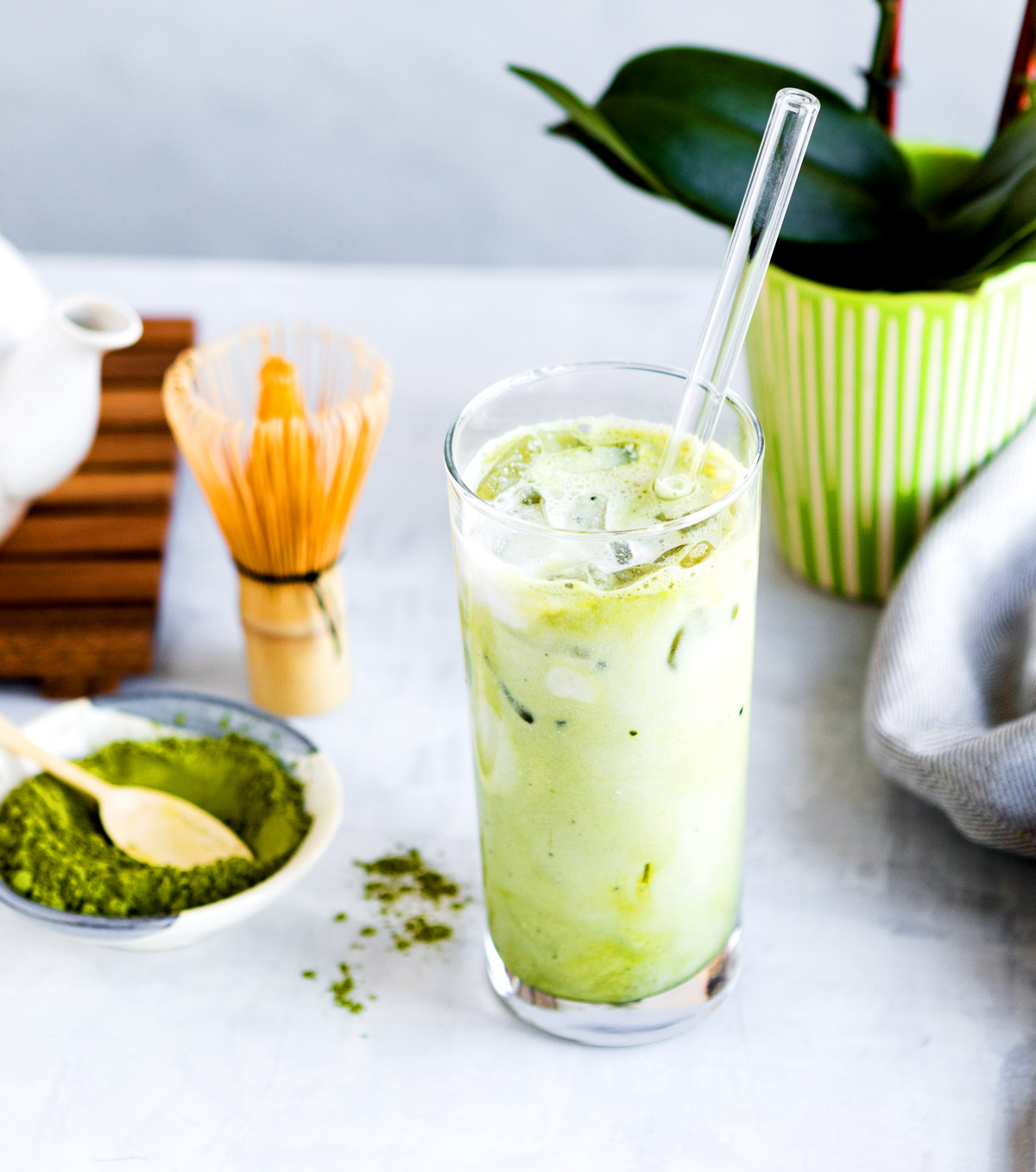
Why this Latte Recipe Rawks
This homemade Iced Matcha Latte is smooth, refreshing, and made with simple ingredients I actually feel good about. It takes just a few minutes to blend up, costs way less, and gives me that same cozy-cool energy boost without the jitters that I looooove in matcha.
- Matcha is packed with antioxidants, especially EGCG, which supports metabolism, brain function, and glowing skin. It also gives you a gentle, focused energy boost without the jitters or crash that coffee can bring.
- Using a high-density almond milk, like Elmhurst Milked Almonds or homemade almond milk, adds 5+ grams of protein and a creamy texture without the heaviness of dairy. Want more protein? Add a scoop of unflavored collagen. #gamechanger
- A splash of vanilla extract and pure maple syrup brings warmth and depth, rounding out the earthy notes of matcha with a soft sweetness. You can use any natural sweetener you like in this recipe— even dates work amazing!
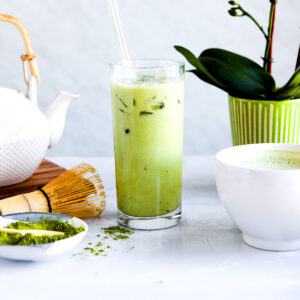
Vanilla Iced Matcha Latte
Ingredients
- 1 cup almond milk
- 1 ½ teaspoon matcha powder
- ½ teaspoon pure vanilla extract
- 1 teaspoon maple syrup optional
Instructions
- Scoop matcha powder into a blender, along with almond milk, vanilla and maple syrup.
- Blend on high for 30 seconds.
- Pour into a glass with ice.
Notes
- Like it sweeter? Add more maple syrup or honey and taste until it’s perfect for you.
Nutrition
Did you make this recipe?
Leave a review for a chance to win signed copies of my cookbooks!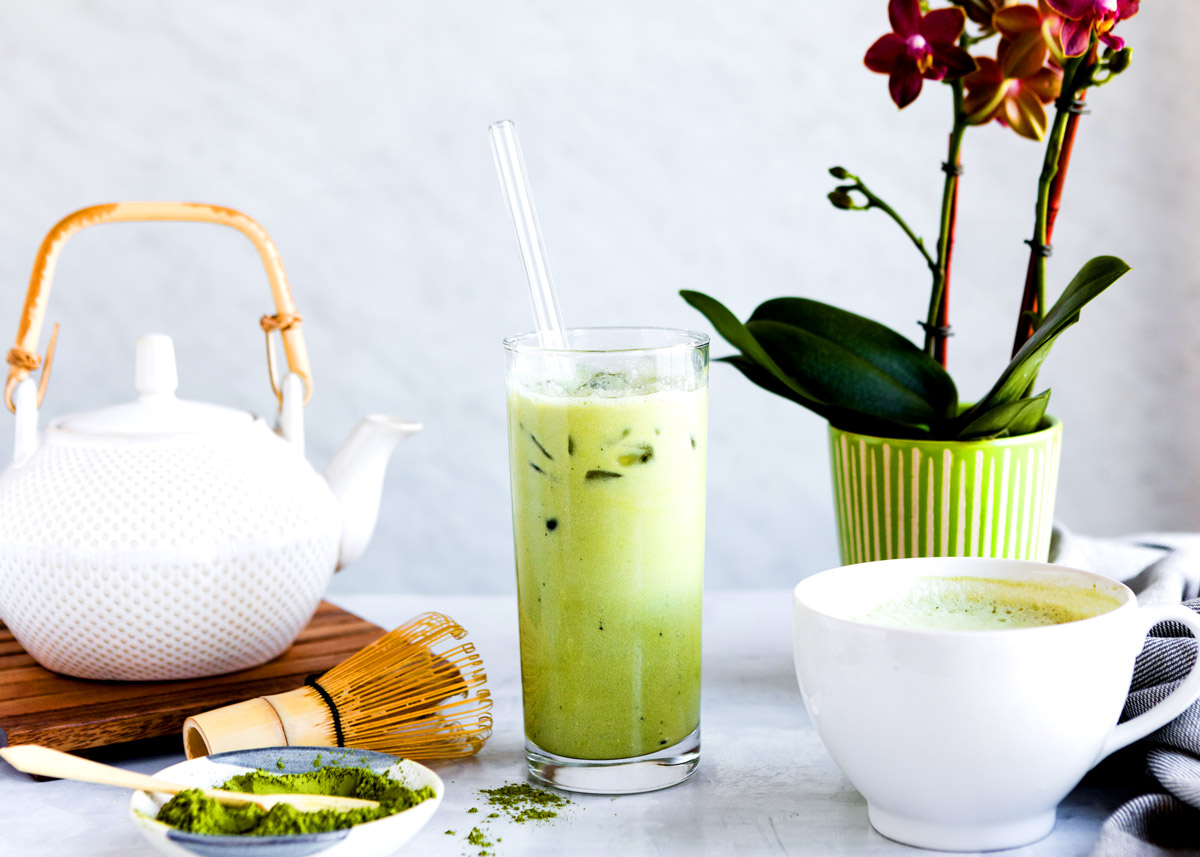
Common Questions
Matcha is a type of green tea that dates bake to 7th century China. The Chinese used it to make green tea, while the Japanese invented the matcha latte drink (after a Japanese Buddhist monk took matcha tea seeds home from China). Matcha is considered the highest quality tea Japan has, and is used in Japanese tea ceremonies that date back to the 1500’s. The tea ceremony has 4 basic principles: harmony, respect, purity, and tranquility.
Look for ceremonial grade matcha for the best flavor and color. Culinary grade works too—it’s more affordable but slightly more bitter. While you can now buy matcha pretty much anywhere, I suggest getting it from a Japanese grocery store, as these will have higher quality, more authentically branded tea. If you don’t have a Japanese grocer near you, then Amazon can be a good alternative. Look for organic to get the highest quality, and Japanese sourced as well.
You don’t need a whist for this iced matcha recipe since everything is going in the blender.
Totally—just adjust the added sweetener so it’s not overly sweet. Unsweetened almond milk gives you more control over the flavor.
Matcha has about 35–70mg per cup, depending on how much you use. I def go heavy on the scoop, because I love the stable, less jittery energy boost I get from it…. esp compared to coffee.
You can, but it’s best fresh. If you prep it ahead, wait to add ice and give it a good shake or stir before serving, as matcha can settle.

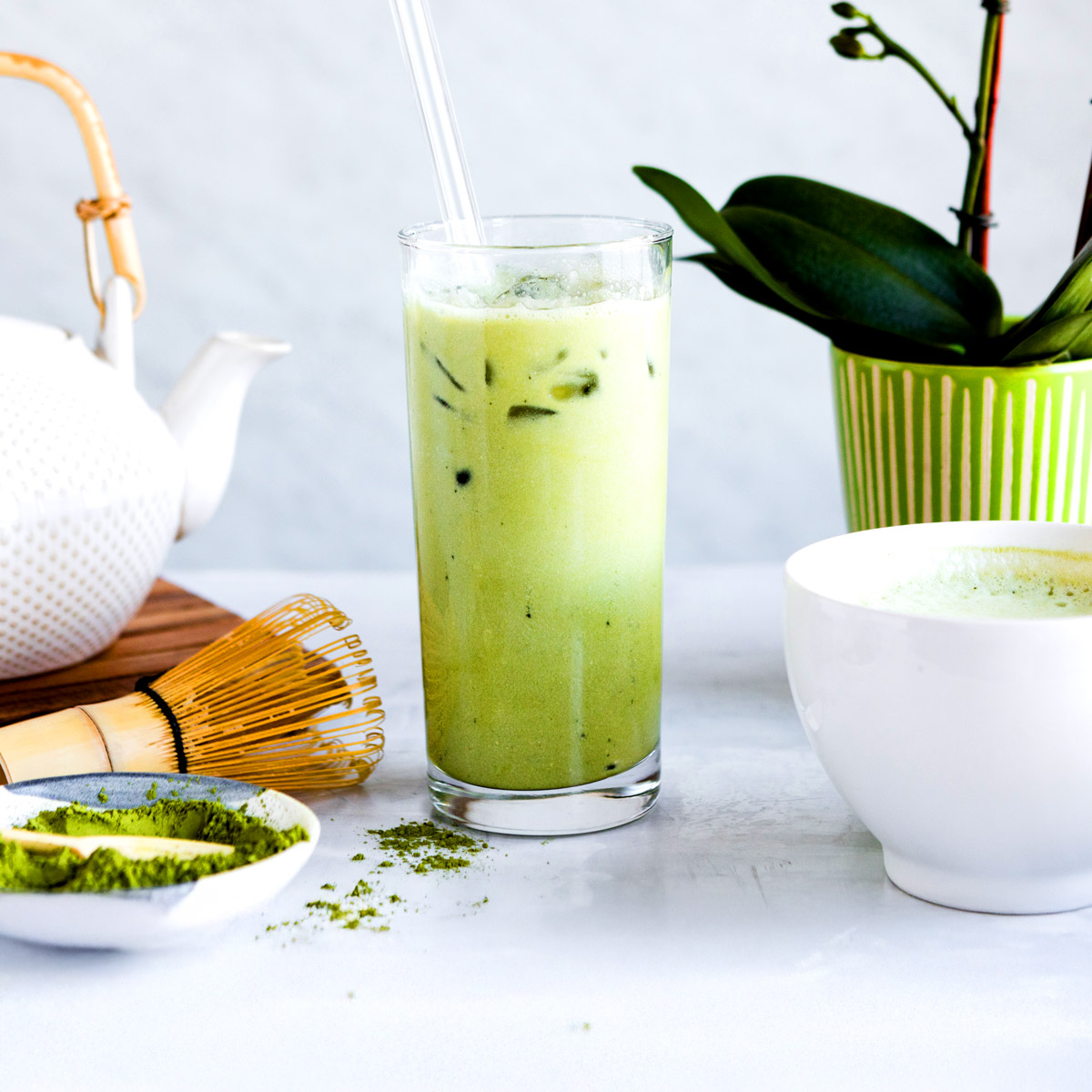
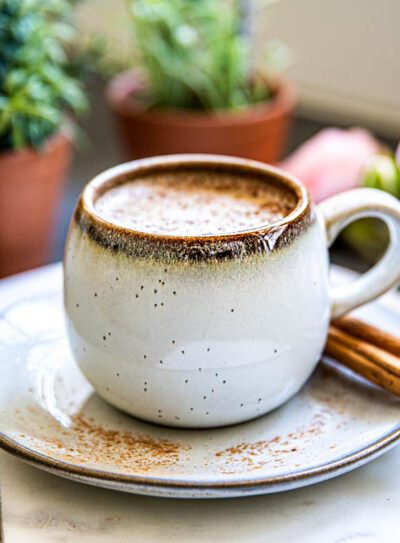
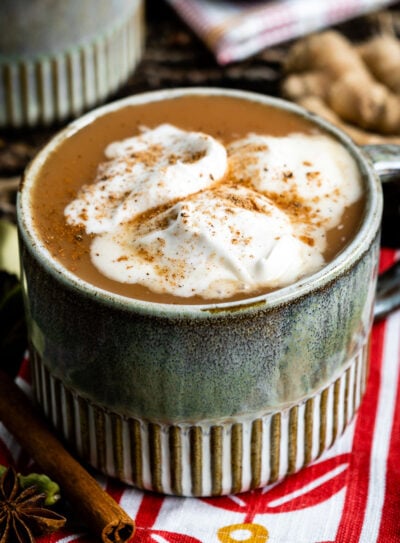
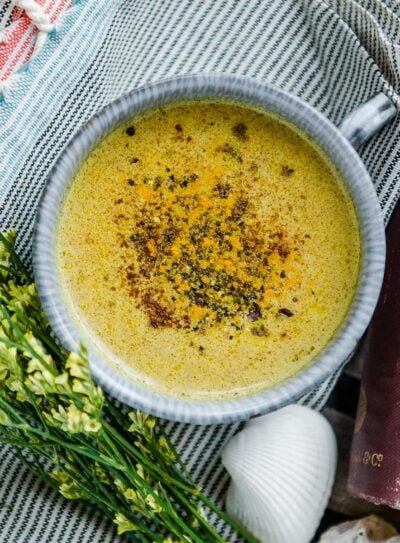
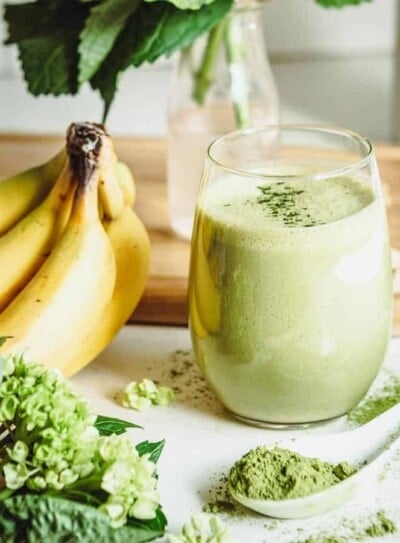
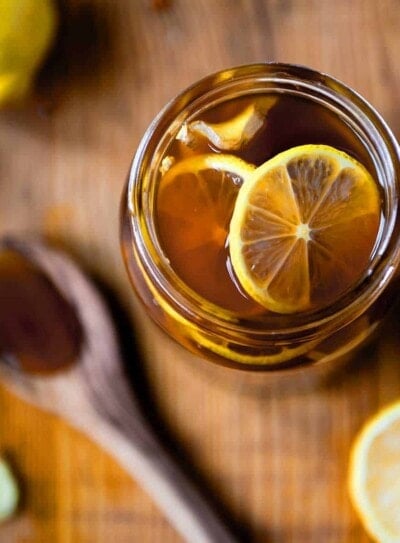
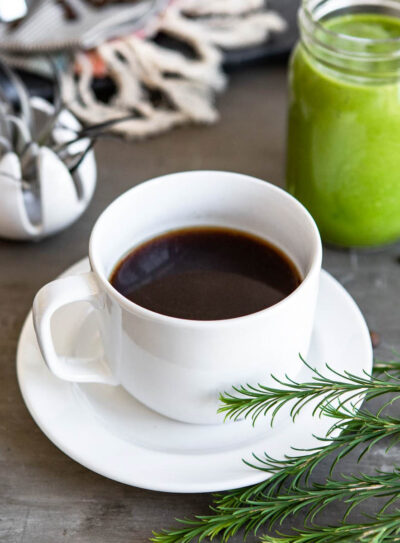
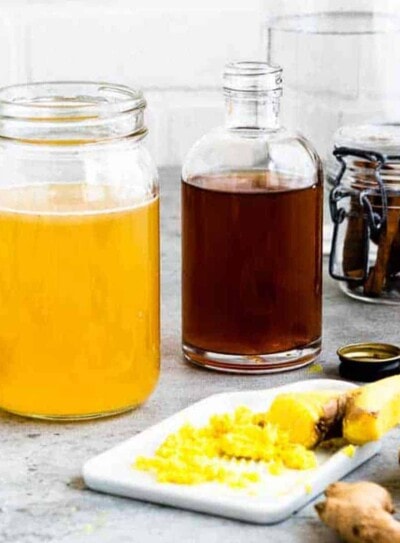
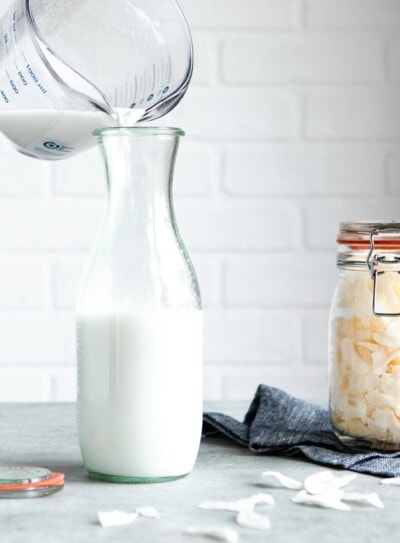
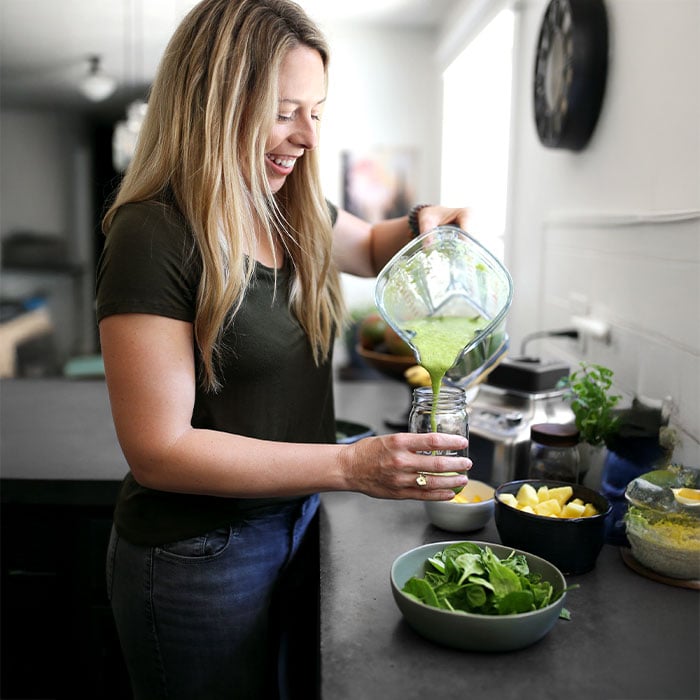
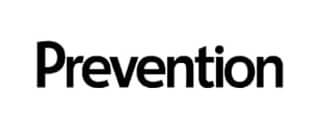
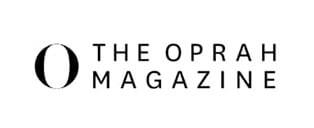
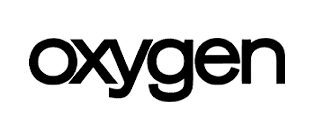






Used oat milk for a super creamy finish. Still learning to like the taste of match but the texture of the latte is spot on!
Hi Erin! Matcha is definitely an acquired taste yet like you said the consistency and creaminess in this Matcha Latte is great!
Quite tasty and it really did give me that extra boost without overdosing on caffeine. Was a little more clean up than what I would normally have had but it was totally worth it. The vanilla was just what it needed to make it just a tad frothier.
Hi Jason! So glad you enjoyed it! You are right, a little more cleanup but sooooo worth it!!
Is there a decaf matcha?
Hi E,
I was able to find a couple on Amazon – here is a link to my search results that you can browse through: Decaf Matcha Powder results on Amazon
Hope this helps! 🙂